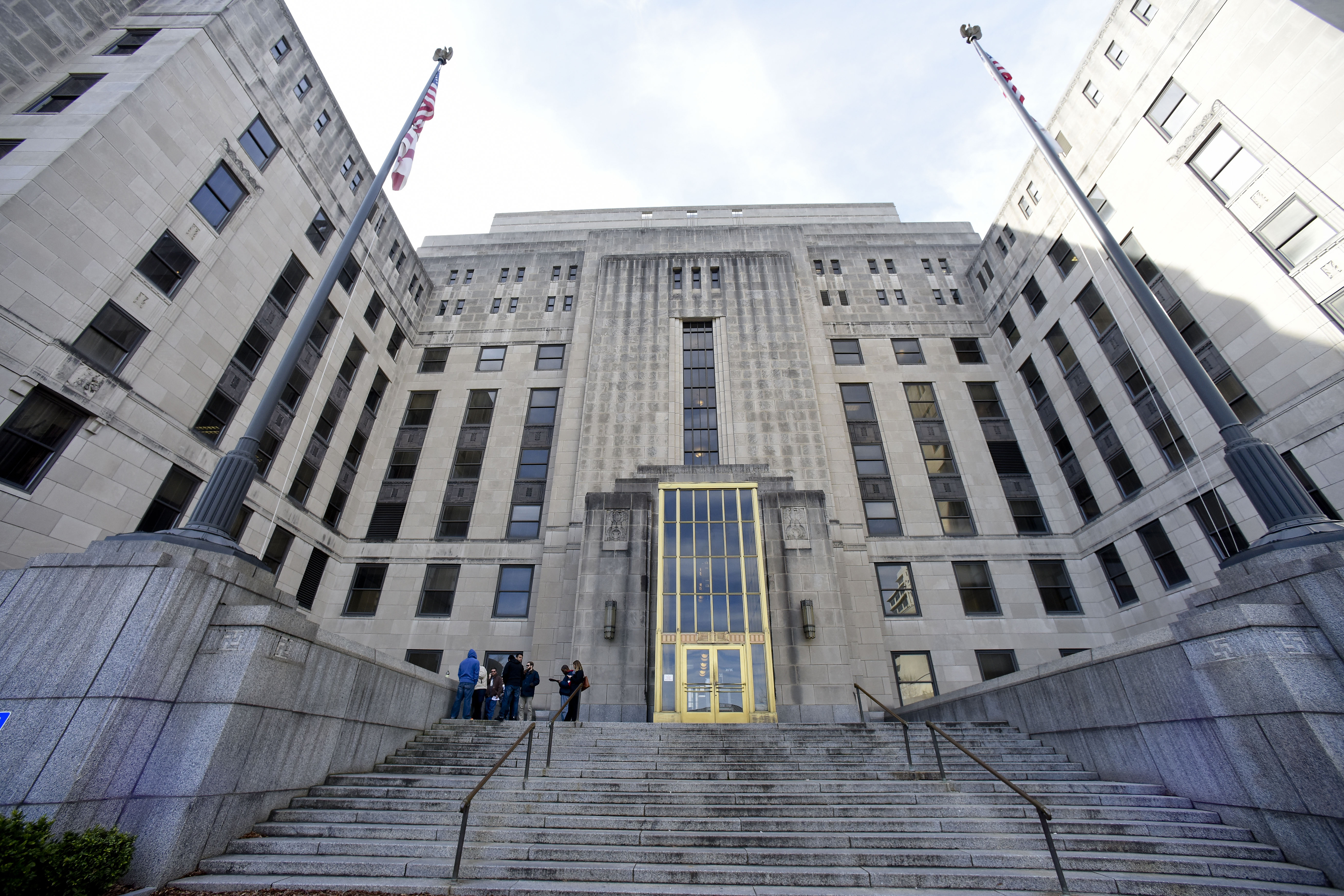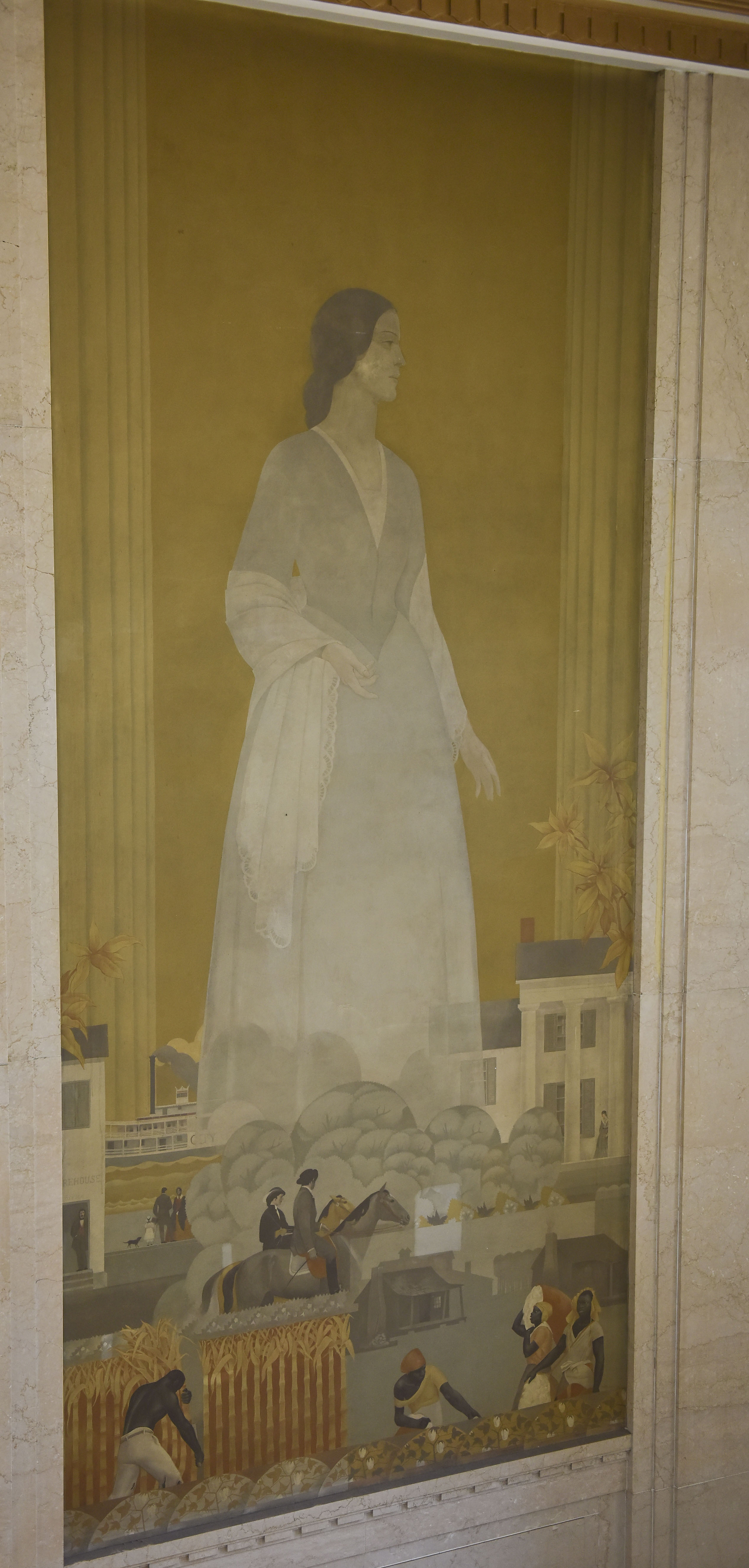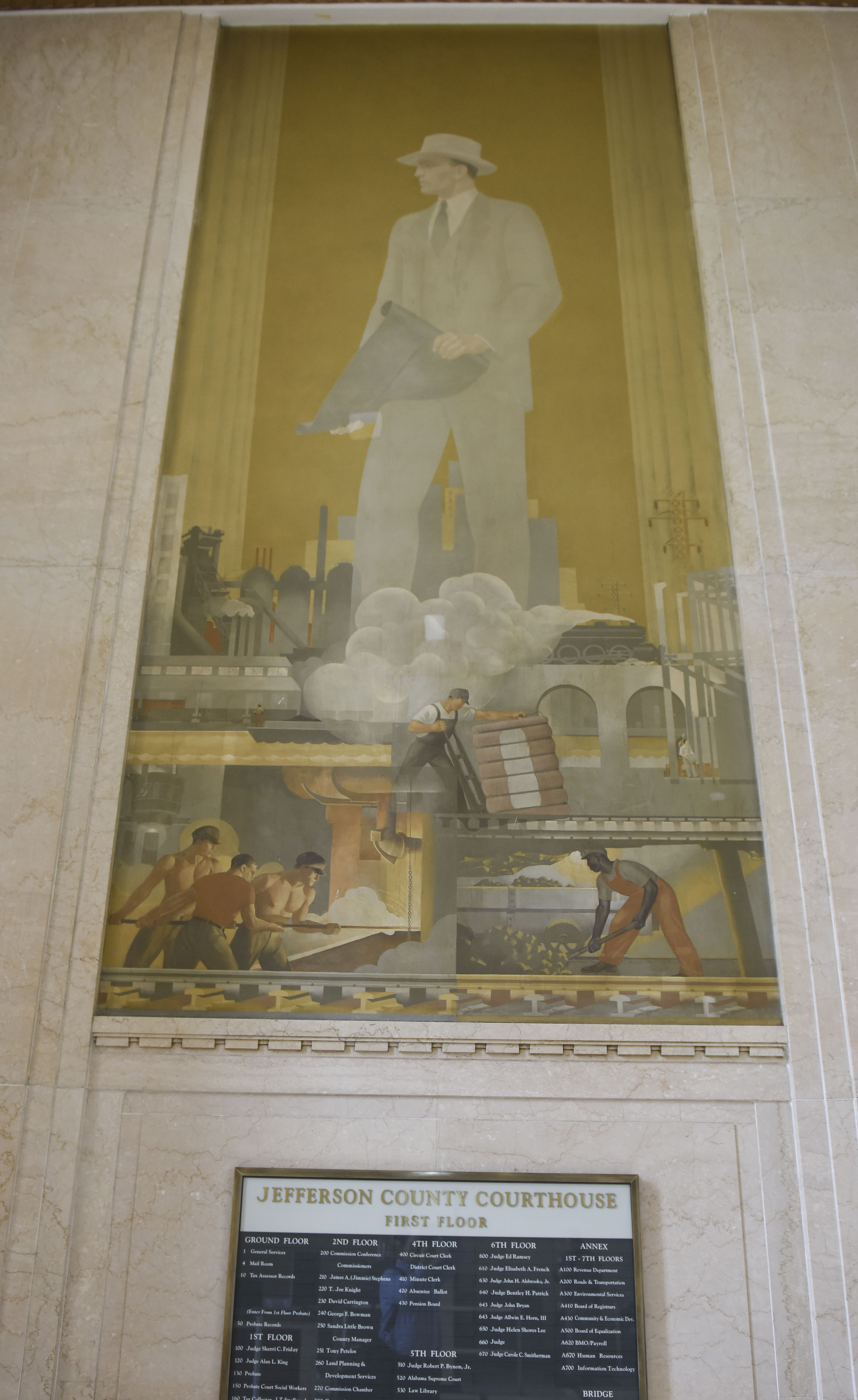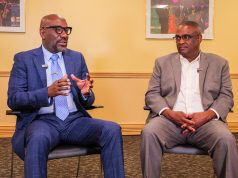
Committee close to recommendations on courthouse murals some see as offensive
By Barnett Wright
Birmingham Times Staff
The Jefferson County Mural Committee could submit recommendations next month about what to do with murals in the lobby of the downtown courthouse that some see as offensive. The 17-member group’s suggestions will be presented to the Jefferson County Commission, which will have the final say on the murals.
County commissioners Sandra Little Brown and Joe Knight are meeting with a number of community members and civic leaders to determine what to do with the murals, which include one of slaves picking cotton in a field and another of black men working in a furnace.
“Something has to be done because the murals in Jefferson County Courthouse are offensive and, to some, humiliating,” Brown said. “For blacks in Alabama to still be viewed as slaves does not offer any redeeming value to many in Jefferson County. The murals should be taken down because it’s time to reevaluate them and bring our symbols in line with the new Jefferson County. They should come down because it’s the right thing to do.”
A Matter of Perspective
The Jefferson County Commission in November 2015 formed the mural committee to help decide how to address concerns about the courthouse artwork. The past three months of deliberations have been both challenging and rewarding, say those involved in the process.
“The committee has wrestled with this quite sincerely,” said committee member Linda Nelson, who is with the Jefferson County Historical Society. “The issue for a lot of people is … why should [the murals] be in a courthouse, in a public building. The courthouse is where people go to get justice, and [the murals] represent, essentially, injustice.”
Committee member Eyrika Parker, a radio talk show host with WJLD, said she believes the mural of slavery needs to “be covered or come down.”
“I think it is an inappropriate place to hang a mural,” she said. “That is not a place to display such an example of the most pernicious part of our history. The courthouse is the one place everyone comes to for a redress of their grievances.”
Committee members have discussed a number of ways to deal with the murals, including taking them down, covering them, commissioning a new panel, or restoring and preserving them.
“The ideal thing in my mind is removal, but I am not opposed to compromise,” said Hezekiah Jackson, president of the Metro Birmingham Chapter of the National Association for the Advancement of Colored People (NAACP) and a committee member. “My greatest challenge is that that can’t be the whole story. If the compromise is that the story evolves from that point [of slavery] and we put up a portrait of President Barack Obama or Dr. Martin Luther King, [put up] something to show some evolution.
“The mural up there now seems to have us stuck in time,” he said. “I’m not opposed to their historical perspective, but where is mine?”
Removing the murals could be costly both financially and artistically, some say.
“It appears that they are so well attached to that wall that it is impossible to take them down without damaging them,” Nelson said. “Even if you could take them down, they are so big [and] there is no place else to show them. Of course, the Smithsonian Institution [in Washington, D.C.] would like to get them, but we cannot get them down intact.”
The murals show something about the history of the building and the history of society’s attitudes at that point in time, Nelson said.
“Many of us feel the thing to do is restore them and put in some didactic panels that explain them and put them in context and talk about the injustice,” Nelson said. “[The panels would] say who painted them, when they were painted, why they are there, [similar to what] would be done if they were at the Birmingham Civil Rights Institute or the Birmingham Museum of Art.”
Moved to Act
Brown has said she was contacted by the Birmingham chapter of the NAACP and others about the murals and began meeting with the group to work out a solution.
“The main plank of their grievance platform was that the murals were insensitive to blacks who had to visit the courthouse on a daily basis, not to mention to those blacks who have to work there daily,” Brown said.
In the courthouse lobby, two 17½-by-8-foot murals painted by Chicago artist John Warner Norton depict the agrarian Old South and the industrial New South. The paintings, which were completed in the early-1930s, were commissioned by Chicago architectural firm Holabird & Root.
Brown said she also was moved to act after learning of an online petition started by Mountain Brook resident Anne Garland Mahler, who demands that the Jim Crow era murals be taken down at once.
“These murals were painted in 1931-1932 in the midst of Jim Crow, and they both romanticize a hierarchy of labor in which black people are positioned at the lowest level,” the petition reads.
Brown said she has a message for those who believe the murals “represent Jefferson County history.”
“If that is the case, then the history of the murals is incomplete,” she said. “We are now a new Jefferson County, and these murals are offensive to the new county.”
The following is a full list of the committee members, in addition to Nelson, Parker, Jackson, and commissioners Brown and Knight:
• Ahmad Ward, head of education and exhibitions at the Birmingham Civil Rights Institute
• Dr. Carl Marbury, former president of Alabama A&M
• Evan Williams, Birmingham Land Planning Department
• Gail Andrews, director at the Birmingham Museum of Art
• Graham Boettcher, curator of American Art at the Birmingham Museum of Art
• Gwen Webb, Foot Soldiers International
• Jeff Freeman, Wells Fargo, Trussville
• Kate Nielson, former executive director of the Community Foundation of Greater Birmingham
• Mark Kelly, publisher of Weld for Birmingham
• Odessa Woolfolk, board member Birmingham Civil Rights Institute
• Pastor Steve Green, More Than Conquerors Faith Church
• Randall Woodfin, Birmingham Board of Education








